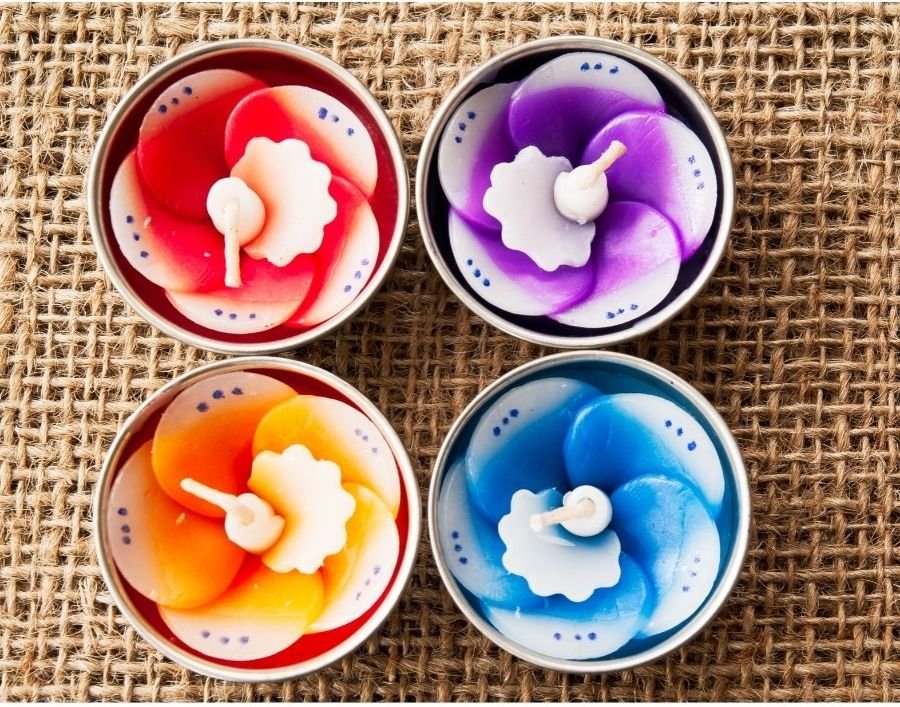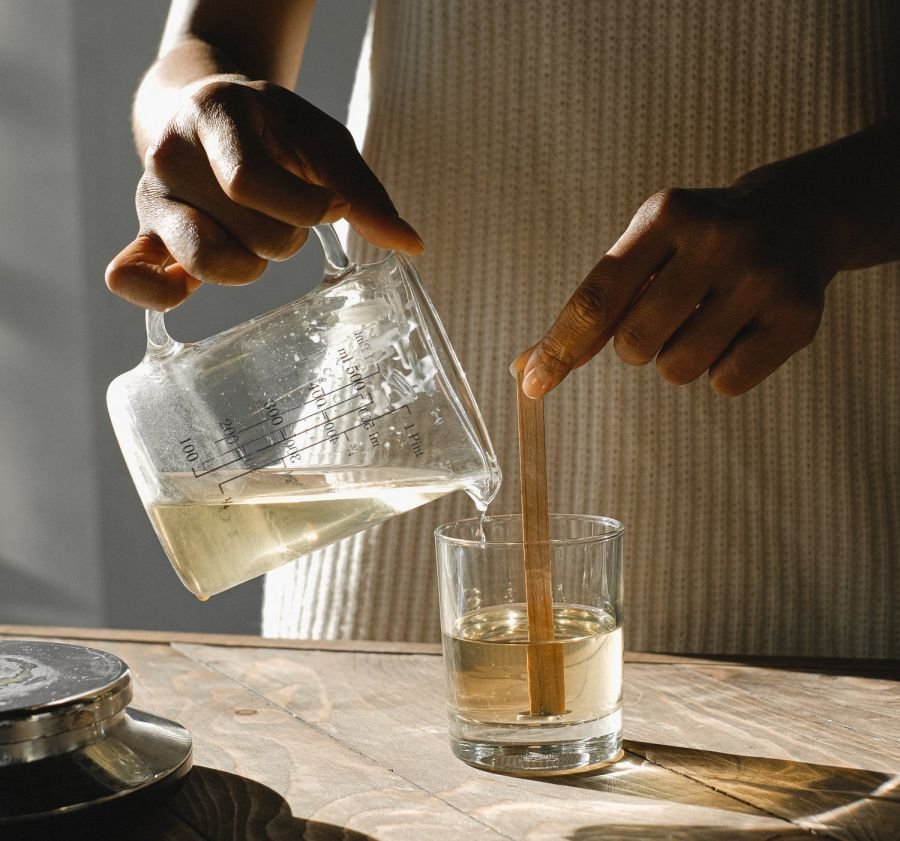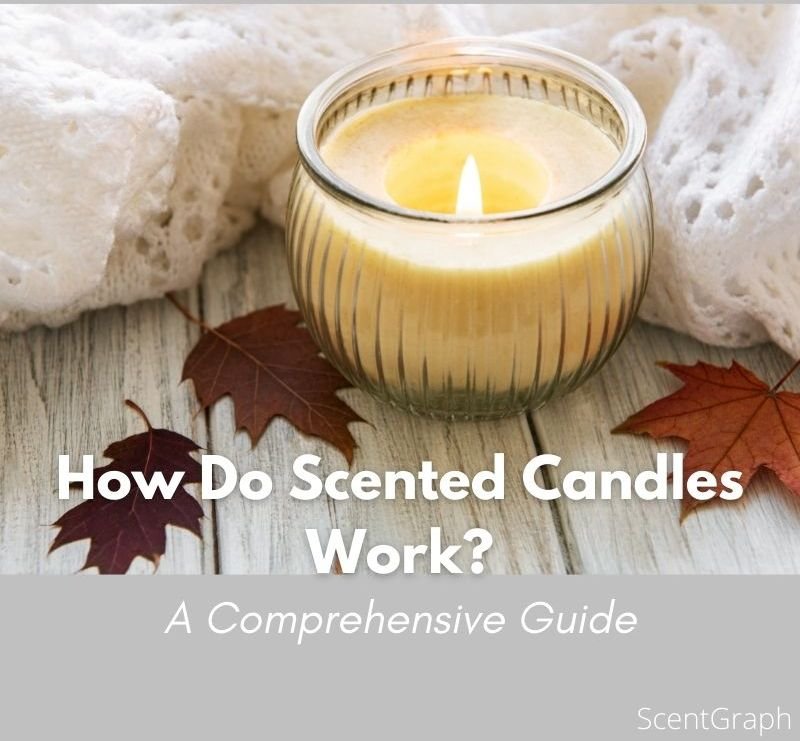Scented candles are a great way to add fragrance to your space and mask unpleasant odors. They’re mood enhancers with their invigorating fragrance and aromatherapy benefits. From home décor to aromatherapy, the candles offer plenty of benefits. But have you ever wondered how do scented candles work?
This article aims to be a guide and resource on this topic. Let’s dive in!
Fragrance Oils, Essential Oils And Their Role In Scented Candles
Candles have been around forever, with some historians dating ancient candles to as far back as 3000 BC. Scented candles as we know them today, came into popularity around the mid-1980s. The ‘scent’ in scented candles comes from the addition of fragrance oils or essential oils.
Fragrance Oils
Fragrance oils, also known as perfume oils or scented oils, are artificially manufactured from various sources, often from petroleum by-products.
There are two main categories for these oils:
- Synthetic Fragrance Oils
- Natural Fragrance Oils
Natural fragrance oils are so named due to the origin of the scent. For example, the scent limonene comes from lemons and vanillin from vanilla beans. So while these oils come from ‘natural’ sources, the synthesization process puts them in the artificial category.
Fragrance oils are not the preferred choice for aromatherapy. Conventional aromatherapy doesn’t prescribe any health benefits for fragrance oils.
Essential Oils
Essential oils are extracted from the various parts of a flower, plant, or herb. This extraction usually involves the steam distillation process. These oils retain the original fragrance and health benefits for a longer time.
Aromatherapy benefits are often ascribed to essential oils. These oils are generally more expensive than fragrance oils. Although the cost depends on several factors, including the extraction method.
Discover The Intensity Of Fragrance With ‘Candle Throw’
Have you ever wondered why certain candles emit a fragrance that gradually wafts in the whole home? The distance a particular candle can spread its fragrance is known as candle throw.
It is sometimes also referred to as a scent throw and helps us to understand how scented candles work. This concept applies to lit and unlit candles.
Know Your Candle’s Throw: ‘Cold Throw’ Or ‘Hot Throw’
You must have noticed the scent coming from a brand new candle before you’ve used it. In essence, this is the cold throw of a candle.
Hot throw refers to the aroma from the candle once the wick is lighted and the wax melts. Simply put, this is the conventional aroma that we notice when we light or use a scented candle.
So, we may call a candle throw strong if it encompasses a larger area. While a weak candle throw means that the scent stays within a small area near the candle.
Sometimes, you’re barely able to smell a candle even if you put your nose right next to it!
This candle throw concept is very important for anyone who purchases scented candles. Sometimes, we buy beautifully designed candles with a strong cold throw, assuming it will have a good hot throw too. However, it turns out to be disappointing to see a weak hot throw, after lighting the candle.
A candle has a robust cold throw while you buy it may not necessarily have a strong hot throw too.
Factors That Affect Candle Throw And How To Increase It
- A spacious room will have a strong candle throw while a room with its door closed hinders the scent from spreading to other areas of your home.
- Open the doors within your home when you light the candle as the air will circulate the scent at every nook and corner.
- Look for candles that have a thick and a good quality wick. The wick affects the burning temperature. Higher temperatures usually result in a better hot throw.
- The type of wax used in a candle also determines the hot throw. Soy wax candles have the weakest hot throw.
- A candle infused with high-quality fragrance oils or essential oils tends to have a strong hot throw.
- A wide wax pool offers a better scent throw as compared to a narrow one.
How Do Scented Candles Work With Different Kinds Of Wax?
Whenever you purchase a candle it mentions the type of wax used to make a candle. It is significant because wax has a direct impact on the scent throw and how well the candle smells.
Soy Wax
Though a relatively new entrant in the candle-making scene, soy wax has burst in popularity. Soy wax is natural in its origin and is usually made by hydrogenating soybean oil.
Soy wax can circulate fragrance to every corner of your space where other wax candles may fail. It doesn’t have toxins, so the fragrance remains unadulterated and unhindered.
All kinds of wax emit soot, but soy wax is amongst the cleanest burning. Soy wax has a lower melting point which makes it a good choice in winters. It is a candle wax that lasts long.
Beeswax
This is a naturally occurring bee product made by honeybees in their hives. Beeswax is free from any chemical or artificial processing. It is a versatile product that finds use in several niches, including cosmetics, lubricating wood, and candle-making.
Beeswax candles use natural beeswax as their main ingredient. The wax is somewhat naturally scented. Lighting a beeswax candle gives a pleasant scent of honey and a bright light because it has a high melting point as compared to soy or paraffin candles.
Therefore, you can relax in a sweet natural fragrance, although scented beeswax candles are quite popular too.
Historically, it is associated with royalty and was also burnt in churches because of its sweet aroma, bright light, and its ability to purify the air. Beeswax, like soy wax, is smoke-free and leaves no soot behind.
Paraffin

This is also called mineral wax and is a petroleum by-product which is a white or colorless solid wax. Paraffin wax is widely used in cosmetics as a remedy for dry skin, in making crayons, and several other industries.
Paraffin wax is the most popular wax for use in candle making. This wax is inexpensive, easy to work with, and can help with giving bright shades to candles. Paraffin wax candle offers a strong scent throw as compared to soy wax because soy is very dense, therefore it has a high melting point. Paraffin burns quickly, thus giving a strong scent throw immediately.
How The Wick Plays Into Scented Candle Use
Now that you are aware of various kinds of wax candles, it is equally important to know what wonders a wick can do to a scented candle. When we buy a candle the traits we consider are its scent, design, or size. The wick is generally ignored. Yet the wick is at the center of making scented candles work.
However, this small part of a candle is of tremendous importance when working with scents. A wick transports the wax to the flame and aids in lighting.
As the molten wax touches the flame through the wick, it vaporizes and releases fragrance. Thus no matter how beautiful your candle is it will not be able to throw a strong scent if the size of the wick is not right according to the candle.
Keep the following points in mind:
- If the wick is too small as compared to the size of the candle, it will be incompetent to throw a scent. Larger wicks generate more smoke and soot.
- Dense fragrances like amber and musk need a thicker wick.
- The thickness of the wick has a relation to the diameter of the candle.
- Dense wax like soy usually needs a thick and large wick for better dissemination of scent.
- Strong fragrant and deep-colored candles require a large and thick wick to impart fragrance.
The Candle Making Temperature Affects Scent Quality

If you are fond of scented candles then this piece of information is a must for you. As the wax melts in a lit candle, it emits aroma. But first, there has to be a way to imbue the fragrance in the wax. The candle-making temperature plays a critical role in this part.
To get a good scent throw, essential oils and fragrance oils are added to wax at the right temperature during manufacture. The right temperature facilitates the binding process of fragrance oil or essential oil to wax.
In most cases, 245 °F is the maximum limit for heating wax. Beyond this temperature, the wax will lose its ability to bond with the oil. On the other hand, if the temperature is too cold, the oil will not dissolve well into the wax. Thus both ways it will have a weak scent.
For candles with heavy fragrance oils, the recommended binding temperature is at 185°F. Lighter scents like citrus can bind with wax at around 160°F. You can use a thermometer to keep tabs on the temperature. Using a wax thermometer or candle thermometer is okay, though you can also use a kitchen thermometer.
The appropriate temperature to add scents to soy wax is 140°F, for Beeswax it is 158°F and for Paraffin wax it is 158°F.
Scented candles always smell great and are appealing to the senses. You may burn them to relax, rejuvenate, meditate or mask odors. The flicker of candlelight with scent is a great way for a lovely ambiance. Now that you know how do scented candles work, you can enjoy their working and scents even better!

